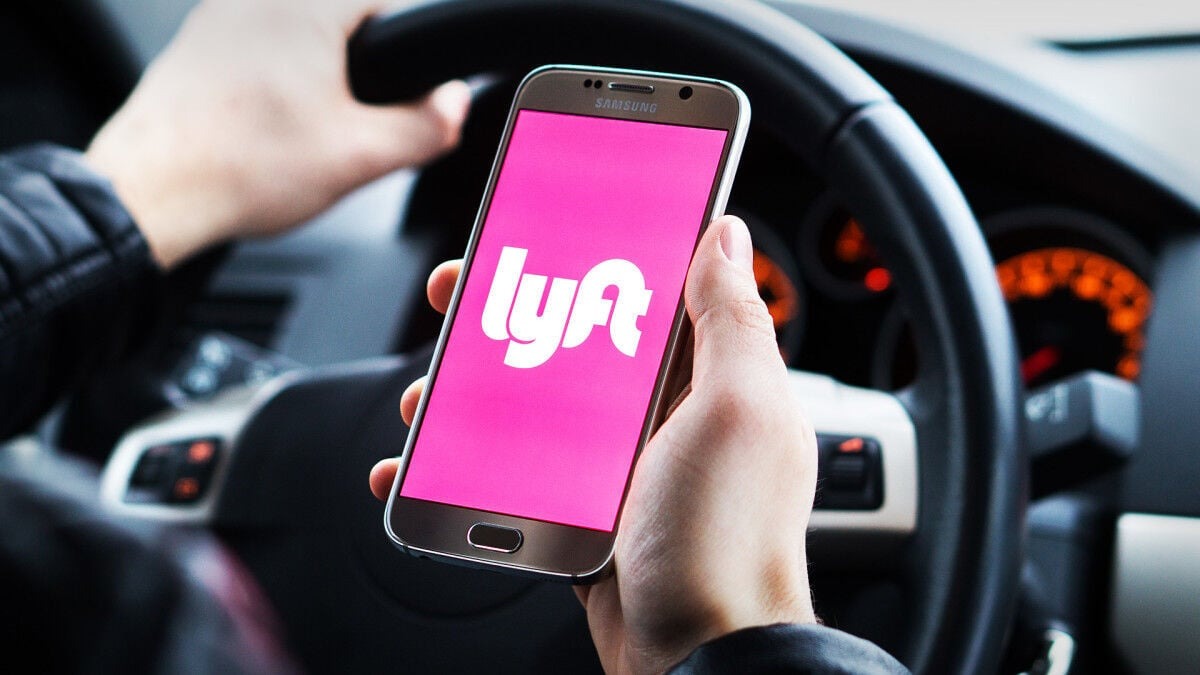Lyft is available in the United States and Canada.
Right now, Lyft is the second most popular ridesharing provider in the United States.
It’s also among the top ride hailing companies on the globe.
The Lyft statistics in this article will help you understand more about the company and its popularity.
As of 2022, Lyft users account for more than 20 million riders that regularly use the service.
Furthermore, Lyft completed more than one billion rides throughout 2022 and generated about $4 billion (USD) in revenue.
This data can offer you valuable insights into the overall ride-sharing industry and Lyft’s overall performance.
Some of these ride-hailing statistics may surprise you and others may not.
If you’re a marketer, these statistics will help you track Lyft’s growth and progress over the past few years.
We will also show its revenue, revenue growth, ridership, and driver base performance over the years.
Let’s explore the ridesharing market and specifically Lyft.
Post Contents
- 1 Key Lyft Statistics
- 2 Top Lyft Statistics in 2024
- 2.1 1. In 2022, over 45 million people uses Lyft for their transportation needs.
- 2.2 2. Lyft sold its self-driving division to Toyota in 2021.
- 2.3 3. Lyft has generated $41 million so far in 2023.
- 2.4 4. In 2022, Lyft’s revenue accounted for $40.09 billion.
- 2.5 5. Lyft anticipates a revenue of between $1.130 billion to $1.150 billion for the 2023 Q3.
- 2.6 6. Lyft has about 20.3 million monthly riders.
- 2.7 7. 58% of Lyft riders travel to and from the airport or entertainment venues.
- 2.8 8. 90% of Lyft drivers work or are students.
- 2.9 9. The average cost per rider in 2022 accounted for $57.72.
- 2.10 10. Lyft’s expenses accounted for $5.4 billion in 2022.
- 2.11 11. Lyft has roughly 2 million drivers across the U.S. and Canada.
- 2.12 12. 94% of Lyft drivers say that having a flexible schedule is important.
- 2.13 13. As of 2023, Lyft has operations in 658 towns and cities across the U.S. and Canada.
- 2.14 14. 20% of Lyft drivers are 55 years old and older.
- 2.15 15. 23% of Lyft drivers are women.
- 2.16 16. 8% of Lyft’s drivers come from the LBGTQ+ community.
- 2.17 17. 72% of Lyft drivers are people of color.
- 2.18 18. 14% of Lyft drivers work outside of conventional work hours.
- 2.19 19. 94% of Lyft’s drivers work less than 20 hours weekly.
- 2.20 20. 92% of Lyft drivers say they want to maintain the independent contractor status.
- 3 FAQs
- 4 Conclusion
Key Lyft Statistics
- In 2022, over 45 million people uses Lyft for their transportation needs.
- Lyft sold its self-driving division to Toyota in 2021.
- Lyft has generated $41 million so far in 2023.
- In 2022, Lyft’s revenue accounted for $40.09 billion.
- Lyft anticipates a revenue of between $1.130 billion to $1.150 billion for the 2023 Q3.
- Lyft has about 20.3 million monthly riders.
- 58% of Lyft riders travel to and from the airport or entertainment venues.
- 90% of Lyft drivers work or are students.
- The average cost per rider in 2022 accounted for $57.72.
- Lyft’s expenses accounted for $5.4 billion in 2022.
Top Lyft Statistics in 2024

1. In 2022, over 45 million people uses Lyft for their transportation needs.
According to Lyft’s 2023 Economic Impact Report, over 45 million people used their service for their transportation needs.
They used Lyft to find a driver, a scooter, or a bike for transportation.
Riders use Lyft for a variety of purposes like going to work, doctor’s appointments, errands, play, or other reasons.
(Lyft 2023 Economic Impact Report)
2. Lyft sold its self-driving division to Toyota in 2021.
In April 2021, Lyft sold its self-driving division to Toyota due to the excessive costs associated with the production and testing of self-driving vehicles.
Toyota bought this part of Lyft for $550 million.
(BusinessofApps)
3. Lyft has generated $41 million so far in 2023.
Thus far in 2023, Lyft has generated $41 million (USD) in revenue, which is a rise over the $22.7 million from the first quarter of 2023.
However, this figure is still lower from the second quarter of 2022, when it generated $79.1 million (USD).
Overall, Lyft surpassed its own estimates of between $20 million and $30 million.
(TechCrunch)
4. In 2022, Lyft’s revenue accounted for $40.09 billion.
The final figures from 2022 revealed that Lyft’s revenue accounted for $40.09 billion (USD).
In 2018, Lyft’s revenue was $2.15 billion (USD).
Between 2019 and 2020, Lyft experienced some loss in revenue.
In 2019, its revenue was $3.61 billion (USD) and in 2020, it was $2.36 billion (USD).
However, by 2021, Lyft had improved its revenue at $3.2 billion (USD) for the year.
The final figure for 2022 came to $4.09 billion (USD) which is another rise in revenue for the company.
(Rideshare Guy)
5. Lyft anticipates a revenue of between $1.130 billion to $1.150 billion for the 2023 Q3.
Despite losses and extraneous costs over 2023, Lyft anticipates that their revenue for the third quarter of 2023 to account for between $1.130 billion (USD) and $1.150 billion (USD).
This data comes from the company’s investor report for the second quarter.
(Lyft)
6. Lyft has about 20.3 million monthly riders.

The latest numbers from 2022 show that Lyft has approximately 20.3 million monthly users.
Furthermore, more than 45 million individuals requested rides from the Lyft service.
These numbers are lower than their pre-pandemic figures, but it’s an improvement over the past two years since the pandemic.
(The Small Business Blog)
7. 58% of Lyft riders travel to and from the airport or entertainment venues.
Most people use Lyft to travel to and from the airport or to get to and from recreational or entertainment venues.
Each one accounts for 58% of how riders use Lyft.
Moreover, 49% use Lyft to connect with other forms of public transport and 44% use it when they’re on vacation.
Only 18% use Lyft to get to their job interviews and 26% use Lyft for healthcare rides.
(EnterpriseAppsToday)
8. 90% of Lyft drivers work or are students.
According to Lyft’s 2023 impact report, 90% of their drivers are students or people who have a job.
Lyft, like all ridesharing services, is categorized as a side hustle or side gig used to supplement income.
With inflation as it stands, it’s no surprise that most Lyft drivers already work or are students.
(Lyft 2023 Economic Impact Report)
9. The average cost per rider in 2022 accounted for $57.72.
In 2022, the average cost per Lyft rider accounted for $57.72 (USD).
For comparison, in 2018, the average cost per Lyft ride accounted for $36.02 (USD).
It’s not unusual for inflation to impact the cost of Lyft rides.
Since the cost of fuel, power, maintenance, and repairs is higher due to inflation, so are Lyft rides.
In 2021, $51.79 (USD) was the average cost of a Lyft ride.
This means that between 2021 and 2022, Lyft saw a 11.4% increase in ride costs.
(BusinessofApps)
10. Lyft’s expenses accounted for $5.4 billion in 2022.
We know the revenue generated by Lyft in 2022, but they also had expenses that accounted for $5.4 billion (USD) in 2022.
When you read the final tallies of revenue reports, you will find that they are adjusted to account for expenses the company incurred over the year.
(Rideshare Guy)
11. Lyft has roughly 2 million drivers across the U.S. and Canada.

Statistics show that across Canada and the United States, Lyft has about 2 million drivers transporting passengers.
Having millions of drivers helps Lyft to provide efficient and effective services to its millions of monthly riders across these states, territories, cities, and towns.
(The Small Business Blog)
12. 94% of Lyft drivers say that having a flexible schedule is important.
In one survey, 94% of Lyft drivers cite a flexible schedule as very or extremely important to them.
Since most of Lyft’s drivers are people who have jobs or are students, it makes sense that they said flexibility is vital to their lifestyle.
Lyft drivers get to make their own schedules and choose to transport passengers according to their time.
(Lyft 2023 Economic Impact Report)
13. As of 2023, Lyft has operations in 658 towns and cities across the U.S. and Canada.
The most recent statistics say that Lyft operates in 658 cities and towns across the United States and Canada.
Once known for the offbeat pink mustache and casual appearance, Lyft is now a company that is publicly traded.
(Rideshare Guy)
14. 20% of Lyft drivers are 55 years old and older.
Lyft drivers 55 and older account for 20% of those who drive for the company.
Some of these drivers may still be in the traditional workforce working towards earning for retirement and some may be already retired (11%) and need more to live on due to inflation.
It’s worth noting that 95 of their drivers are veterans of the United States armed forces.
(Lyft 2023 Economic Impact Report)
15. 23% of Lyft drivers are women.

Data shows that 23% of Lyft’s drivers are female which leaves the other 77% to their male counterparts.
While this appears to be a gender gap, fewer women than men apply to drive for Lyft for whatever reasons.
(Lyft 2023 Economic Impact Report)
16. 8% of Lyft’s drivers come from the LBGTQ+ community.
Lyft doesn’t discriminate which is obvious in that they do have a small pool of LGBTQ+ drivers that account for 8% of its driver base.
That may not seem like much, but it does show inclusion among all drivers that pass their requirements.
(Lyft 2023 Economic Impact Report)
17. 72% of Lyft drivers are people of color.
In terms of ethnicity and race, 72% of Lyft’s drivers are people of color.
Another 33% of Lyft drivers are Latin American or Hispanic and 23% are Black, African American/Canadian, or Afro-Caribbean.
Another 4% are Arab, Persian, or Middle Eastern and 11% are Asian, Native Hawaiian, or Pacific Islanders.
(Lyft 2023 Economic Impact Report)
18. 14% of Lyft drivers work outside of conventional work hours.
In terms of when Lyft drivers work, 14% drive only outside of conventional working hours and only 4% drive between 9 in the morning to 5 in the evening on weekdays.
The driving hours vary among Lyft drivers due to their own working schedules.
For instance, 11% drive solely on weekdays.
(Lyft 2023 Economic Impact Report)
19. 94% of Lyft’s drivers work less than 20 hours weekly.
When addressing work flexibility, we must include how many hours Lyft drivers are working.
Most Lyft drivers (94%) work fewer than 20 hours each week.
These drivers are also the ones that provide most of the rides from Lyft.
(Lyft 2023 Economic Impact Report)
20. 92% of Lyft drivers say they want to maintain the independent contractor status.

Most Lyft drivers (92%) say that they want to continue to work as independent contractors.
They want this so that they can also maintain the flexibility they have grown to appreciate by driving for Lyft.
We wonder how many drivers rideshare companies would lose if they lost their independent and flexible working status?
(Lyft 2023 Economic Impact Report)
FAQs
What is Lyft?
Lyft is a ridesharing, or ride-hailing company that lets its users request rides from nearby drivers through their smartphone app.
Lyft drivers are independent contractors using their own vehicles to take people where they need to go.
How Does Lyft Work?
Lyft has an app that you download from your smartphone according to the type of phone you use (Android or iOS).
Once you get the app you will create an account and from there you can start requesting rides from the app.
How Much Does It Cost to Use Lyft?
Costs incurred by Lyft riders depend on how far they need to go, the time of the day (peak times are premium), and the kind of rise you request.
As a Lyft user, you may find many promotions and discounts that will reduce your costs.
What are the Types of Lyft Rides?
Lyft offers several options for riders such as:
1. Lyft’s standard ride that can accommodate up to 4 passengers.
2. Lyft’s XL ride allows for up to 6 passengers.
3. Lyft’s Lux option provides premium black car and leather seats and is for up to 4 passengers.
4. Lyft’s Lux XL is a larger Lux vehicle that can transport up to 6 passengers.
5. Lyft’s Shared ride is one that lets its riders share a ride with other passengers headed in the same direction.
6. Lyft Access is a service for wheelchair accessible rides.
7. Lyft Assisted is a ride for those who require assistance for picking up and dropping off.
Conclusion
Lyft was established in 2012 and has outlasted several challenges over the years to become the second most popular ride-hailing company across the upper North American region.
It’s second only to Uber with a share of around 75% of the rideshare market compared to Lyft’s 25%.
Now you know where Lyft stands in the market. It’s third in the global market after Uber.
Uber follows China’s Didi Chuxing service.
It’s important to note that 65% of all rideshare drivers said they would stop driving with app-centric platforms if they lost their independent worker status.
However, drivers are 5 times more apt to prefer work arrangements that include the same flexibility, but with benefits.
Whether you’re a Lyft driver, rider, or marketer for businesses that use Lyft, this data includes important things everyone should know about this company and its services.
We hope you feel more informed about Lyft and its services after reading these Lyft statistics.






























